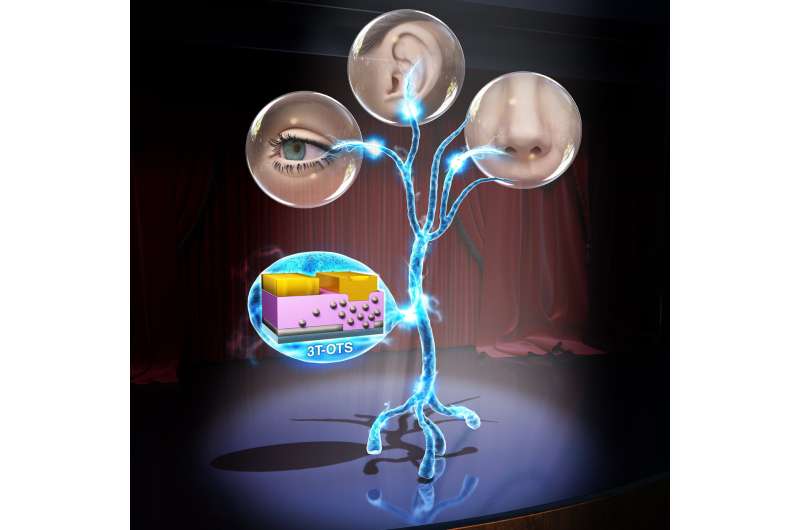Development of low-power and high-efficiency artificial sensory neurons

Currently, AI services spread rapidly in daily life and in all industries. These services are enabled by connecting AI centers and terminals, such as mobile devices, PCs, etc. This method, however, increases the burden on the environment by consuming a lot of power not only to drive the AI system but also to transmit data. In times of war or disasters, it may become useless due to power collapse and network failures, the consequences of which may be even more serious if it is an AI service in the life and safety field. As a next-generation artificial intelligence technology that can overcome these weaknesses, low-power and high-efficiency "in-sensor computing" technology that mimics the information processing mechanism of the human nervous system is drawing attention.
The Korea Institute of Science and Technology (KIST, President Seok-Jin Yoon) announced that its team led by Dr. Suyoun Lee (Center for Neuromorphic Engineering) has succeeded in developing "artificial sensory neurons" that will be key to the practical use of in-sensor computing. Neurons refine vast external stimuli (received by sensory organs such as eyes, nose, mouth, ears, and skin) into information in the form of spikes; and therefore, play an important role in enabling the brain to quickly integrate and perform complex tasks such as cognition, learning, reasoning, prediction, and judgment with little energy.
The Ovonic threshold switch (OTS) is a two-terminal switching device that maintains a high resistance state (10–100 MΩ) below the switching voltage, and exhibits a sharp decrease in resistance above the switching voltage. In a precedent study, the team developed an artificial neuron device that mimics the action of neurons (integrate-and-fire) that generates a spike signal when the input signal exceeds a specific intensity.

This study, published in Nano Letters, introduces a three-terminal ovonic threshold switch (3T-OTS) device that can control the switching voltage in order to simulate the behavior of neurons and quickly find and abstract patterns among vast amounts of data input to sensory organs. By connecting a sensor to the third electrode of the 3T-OTS device, which converts external stimuli into voltage, it was possible to realize a sensory neuron device that changes the spike patterns according to the external stimuli.
The research team succeeded in realizing an artificial visual neuron device that mimics the information processing method of human sensory organs, by combining a 3T-OTS and a photodiode. In addition, by connecting an artificial visual neuron device with an artificial neural network that mimics the visual center of the brain, the team could distinguish COVID-19 infections from viral pneumonia with an accuracy of about 86.5% through image learning of chest X-rays.
Dr. Suyoun Lee, director of the KIST Center for Neuromorphic Engineering, said, "This artificial sensory neuron device is a platform technology that can implement various sensory neuron devices such as sight and touch, by connecting with existing sensors. It is a crucial building block for in-sensor computing technology."
He also explained the significance of the research that "will make a great contribution to solving various social problems related to life and safety, such as, developing a medical imaging diagnostic system that can diagnose simultaneously with examinations, predicting acute heart disease through time-series pattern analysis of pulse and blood pressure, and realizing extrasensory ability to detect vibrations outside the audible frequency to prevent building collapse accidents, earthquakes, tsunamis, etc."
More information: Hyejin Lee et al, Three-Terminal Ovonic Threshold Switch (3T-OTS) with Tunable Threshold Voltage for Versatile Artificial Sensory Neurons, Nano Letters (2022). DOI: 10.1021/acs.nanolett.1c04125
Journal information: Nano Letters
Provided by National Research Council of Science & Technology


















